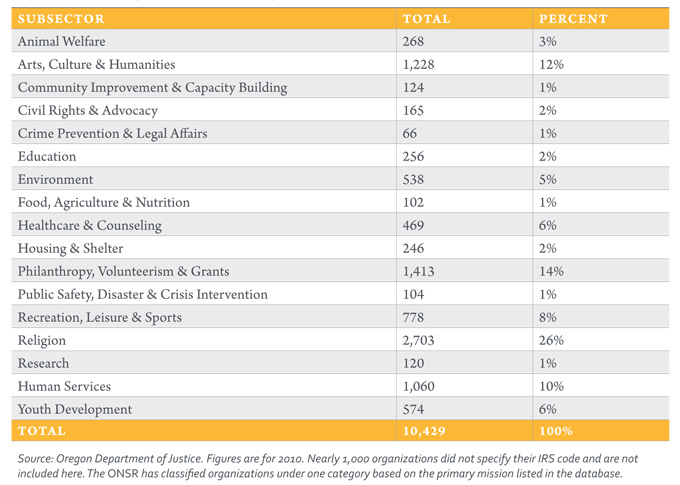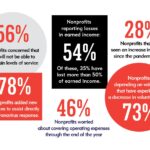 For the first time, there are substantial facts and numbers about the state’s nonprofit sector, which employs 166,130 people, or 13% of Oregon’s private sector employment.
For the first time, there are substantial facts and numbers about the state’s nonprofit sector, which employs 166,130 people, or 13% of Oregon’s private sector employment.
BY ROBIN DOUSSARD
An important first step in quantifying the size and scope of the nonprofit sector in Oregon and assessing the health of that sector was taken this week with the release of the Oregon Nonprofit Sector Report, a joint effort of the Nonprofit Association of Oregon (NAO) and Portland State University.
The report is based on data from Oregon’s 10,429 actively filing public charities listed in the Oregon Department of Justice database and information collected from more than 600 participating nonprofit leaders and organizations. Figures were based mostly on 2010 data. It has facts and figures on the sector’s financial health, organizational capacity, economic and social impact and more.
Some of the findings were heartening, such as nonprofits reporting that employment has stabilized after the recession. Others, less so, pointed to the stress that nonprofits face: 24% said they have less than one month of operating reserves; 51% have turned away clients; and 26% have scaled back programs.
But what is most heartening is that for the first time, there are substantial facts and numbers about this sector, which employs 166,130 people, or 13% of Oregon’s private sector employment. These are jobs in the arts, education, environment, religious groups, civil right, food, health care and others. Those 10,429 organizations have a total revenue of $13 billion.

Unfortunately, it’s a sector that gets scant recognition or attention as the significant economic force that it is. Don’t get me wrong. I think everyone greatly appreciates the work that nonprofits do. But rarely do I encounter a business group or summit that brings in the nonprofit sector as a constant, equal partner to discuss the economy of the state.
The nonprofit role in the state’s economic health is not lost on the Oregon Community Foundation, which last year expanded its priorities to include jobs and the economy. OCF is lead by some pretty smart business people including former Standard CEO Eric Parsons and Duncan Wyse, president of the Oregon Business Council. Just last week, a study commissioned by OCF and the state treasurer was released that identified the gaps in capital that affect Oregon employers. The study concluded “Oregon businesses of all sizes are facing significant hurdles when it comes to acquiring money to finance expansion and additional hiring.”
It is clear that OCF knows – like every person and every family knows – that the building block to a stable, healthy life is a job. And without more jobs, the state cannot begin to crack its chronic high unemployment, tackle the growing poverty rates (which are higher in Oregon than the national average) or address its education crisis.
It isn’t going to get an easier. As more and more social and community services once provide by state, local or federal governments are being defunded or cut back, it leaves many of the state’s nonprofits to fill the gap (the study found that 78% of public charity nonprofits serve low-income populations). And that includes the grit of the unpaid hero. The report quantified that almost 1 million Oregonians volunteered about 116 million hours to help nonprofits deliver their services.
“We are 13% of the private sector workforce, we’re an economic driver, but we’ve been silent,” says Carrie Hoops, executive director of NAO. “ I don’t think people really realize the impact of the nonprofit sector.” Hopefully, this report will help mitigate that.
Robin Doussard is editor in chief of Oregon Business and a former board member of NAO. The survey for the 100 Best Nonprofits to Work For in Oregon is now under way. For details, go to Oregon100Best.com.



